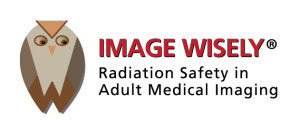New Forms of Radiation Can Benefit Cancer Patients
By Dr. Edward M. Soffen
Radiation oncologist, J. Seward Johnson Sr. Radiation Oncology Center, University Medical Center at Princeton
Friday, March 29, 1996
Publicity about radon, nuclear waste and fallout have caused the public to view radiation as a danger. The use of radiation in cancer therapy, however, is one instance in which its power has been harnessed to the benefit of humankind.
For many years, radioactive isotopes have been important tools in diagnosing and treating patients with cancer. Today, the therapeutic role of radiation has expanded to include two new forms of radiopharmaceutical compounds.
The first new area includes systemic radiotherapy and uses the radionuclide strontium 89, which is given intravenously to treat cancer that has spread to the bone in a process called metastasis. The second area involves new radioactive seed pellets that can be implanted in the prostate gland to control or eradicate localized prostate cancer.
Strontium 89 (under the brand name Metastron) is used to treat painful bone metastases that can accompany breast or prostate cancer. Once injected, strontium 89 is selectively taken up by the bone tissue surrounding the metastasis. The body treats the strontium as if it were calcium, putting it into the bone surrounding the cancer. The strontium then bathes the tumor with radiation while sparing all the normal tissues in the body. Strontium emits beta particles which kill the cancer. The tumor shrinks, relieving pain. The development of painful new tumor sites is also slowed or eliminated.
Previously, the palliative treatment of choice included powerful pain medications such as morphine that are derived from the opium plant. These medications mask the pain, but do not actually kill the cancer. They also have side effects that can interfere with the patient’s ability to enjoy life.
In its use at University Medical Center at Princeton and other cancer treatment centers, strontium 89 therapy has improved the quality of life for patients whose care focuses on the palliation of pain. When patients receive strontium 89 therapy, the great majority – over 75 percent – experience significant pain relief and fewer report new pain areas.
Many are able to dramatically reduce or completely eliminate their dependence on analgesics. With increased freedom from opiates, their quality of life improves dramatically. Among the lifestyle changes for these patients has been an increase in mobility that improves their ability to participate in familiar activities and return to a more normal lifestyle. After one injection, the therapy may be complete or may be repeated at three-month intervals if necessary.
Strontium 89 systemic radiotherapy is still a new tool in the fight against cancer. To date, it has been used on a selective group of patients as a valuable adjunct to the use of External Beam Radiation. EBR treats the metastatic cancer that falls within the range of the focused X-ray beam, but the strontium radioisotopes target all skeletal metastases, including those that may not yet have been diagnosed.
Like many other forms of modern cancer treatment, strontium 89 is done on an outpatient basis, further helping the patient to enjoy as normal a lifestyle as possible. Other treatments are available to control metastatic prostate cancer, including hormonal manipulation or chemotherapy. Both of these may be used before, after or in conjunction with, strontium 89.
On the other side of the treatment spectrum, the best cure for prostate cancer remains early detection. Through regular check-ups, starting at age 40, a man who develops prostate cancer may have it addressed at an earlier-therefore more curable-stage. Earlier detection and treatment may also improve the patient’s ability to retain his sexual potency.
Since prostate cancer remains one of the most common cancers among men, new treatments continue to be researched and applied. There are often excellent options available to treat early stage prostate cancer. They include radical prostatectomy, three-dimensional conformal external beam radiation and prostate seed implantation of the prostate gland.
Seed implantation within the prostate, formerly performed through open surgery, is now performed far more precisely, using ultrasound guidance. Furthermore, three-dimensional treatment planning is made possible using sophisticated new computer
software. Radioisotopes with improved properties are bringing radioactive seed implantation of the prostate gland into the mainstream of local, definitive therapy.
Unlike some other treatments for prostate cancer, the risk of impotency or incontinence with seed implantation is quite small. The ultimate decision regarding the best treatment modality for each individual patient needs to be made jointly between the patient, family members, the urologist and the radiation oncologist.
Copyright © 1996-99 The Princeton Packet, Inc.



